At the far north end of the Dempster Highway sits the remote community of Inuvik, Canada. Located 125 miles above the Arctic Circle, with only one road connecting it to the rest of the globe. The community not only lives with but also thrives in nine months of winter-like weather and one month of total darkness.
I’m fascinated with communities like this: people living in remote, extreme environments. They are like little mysteries I try to understand. Why do people live here? What do they do to survive? What’s day-to-day life like? Are they all introverts? Do they know something about the meaning of life that we busy, urban people living south of the Arctic Circle don’t?
I know I’m not alone – there are other people like me who love communities like this and are fascinated with life there. That’s why Tundra North Tours decided to start giving people glimpses into Canada’s most northern towns and cultures. I visited the northern communities in early April when it was still hovering below zero, the rivers and ocean were still frozen solid, and the colorful town was covered in snow. I quickly learned what I thought was extreme, was normal to the residents in Inuvik.
Table of Contents
Where is Inuvik in the Canadian Arctic?
Inuvik map
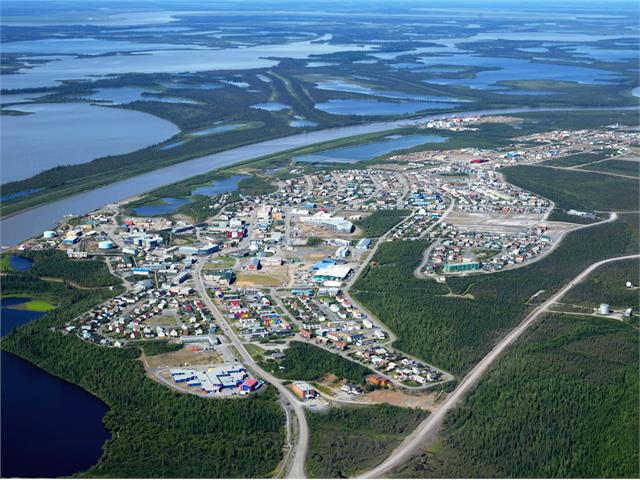
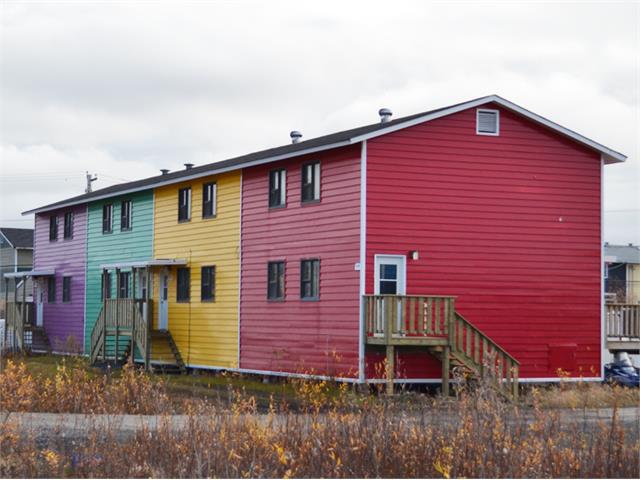
Why Visit Inuvik?
Population 3,500
As we drove around the little snow-filled town, Gerry Kisoun told us stories about Inuvik and growing up in the Beaufort Delta. Gerry is of Inuvialuit and Gwich’in descent, born and raised on the vast and virtually untouched Mackenzie Delta.
Forget cruising and take a real Arctic adventure tour!
As I listen to Gerry’s calm voice and subdued enthusiasm, I realize he’s the perfect ambassador for the North. He grew up here, he loves the way of life, and he wants to share it with everyone.
When you ask him a question, he starts out the answer with “Golly…”. Every time he says it, it makes me smile; it feels innocent and genuine.
“When I arrived in Inuvik (at 3 yrs old)– my world started right here,” Gerry said pointing to a snow bank on the river below the town. “My father, mother, and sister came to Inuvik and my father put a tent up in those willows. We stayed in that tent 3 winters. Can you imagine -50 C? We stayed warm by cutting a lot of wood. My father had a dog team tied up along the river. We eventually moved into what was called a 5-12 unit – 512 square feet. It was 16 feet wide by 32 feet long. It was like moving into a mansion!” Gerry exclaimed.
Gerry works with Tundra North Tours as an occasional guide and storyteller, and he was our ambassador to Inuvik and the culture surrounding it.
We were able to see various parts of town, meet locals, and even participate in the local Muskrat Jamboree festival with Gerry. We witnessed a balance of tradition and modern living; you can watch drum dancing with elders and also do yoga, have high-speed internet access, and do community gardening at the greenhouse.
What is Inuvik known for?
The Muskrat Jamboree
When I arrived in April, Inuvik was just waking up from a long winter’s nap. After a long nap, it’s fitting that you celebrate, and the Muskrat Jamboree is in full swing!
Inuvik, Alaska, and outlying communities come together to welcome spring. Never mind that it’s still only 0 º C outside. The festival brings everyone out again to socialize and see each other after a long, dark winter.
There were food, music, dancing, and games all funded by the entire community; a true team effort. I think that’s one of the things that surprised me most about Inuvik: how strong the community was and how they worked together. You don’t always see that in small towns. I believe that extreme, tough conditions bring people together.
Read about the ultimate Arctic adventure – drive the Ice Roads in Canada
Muskrat Royalty
There was a queen crowned but it had nothing to do with beauty, talent, or knowledge…it had everything to do with sales. The woman who raised the most money for the festival becomes the queen. The winner raised over $60,000 – which was incredible to me in this small community!
Laugh a Little with Games for Kids and Adults
I thought all of the fun and games (orange pass, skittle drop, egg carry) were going to be for the kids, so I was surprised when all of the teams were adults! It made me think of what fun it is for adults to be kids again. I reveled in their laughter, laughter that made them seem seven years old again.
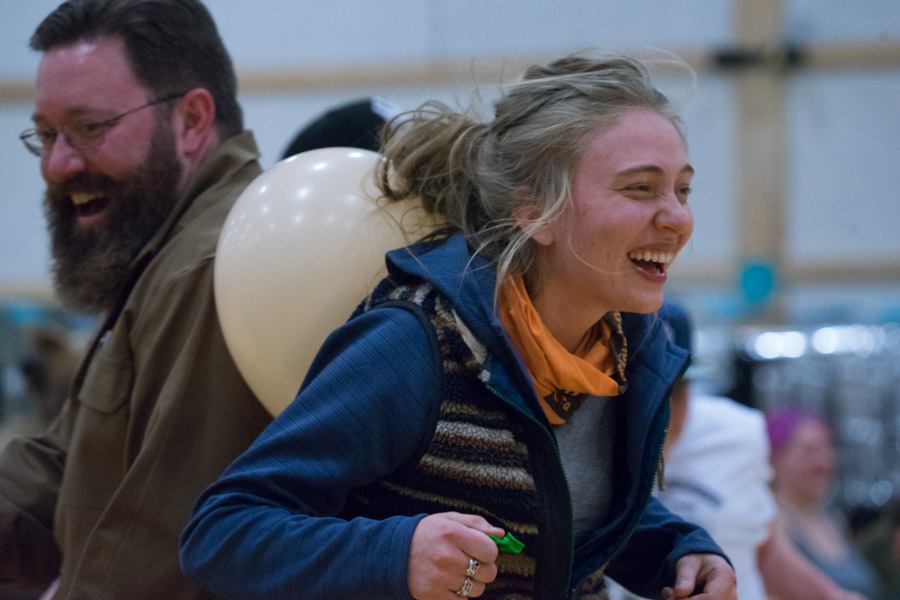
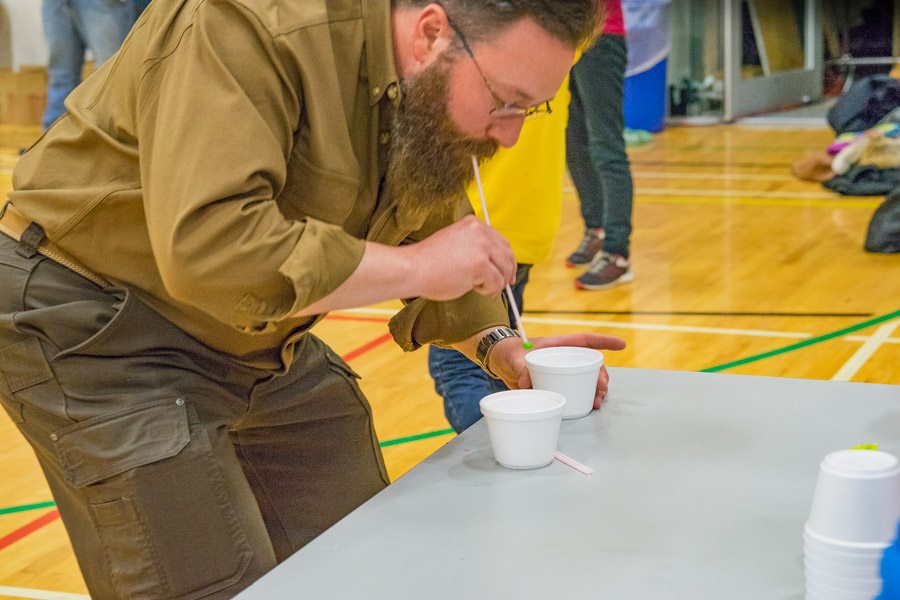
Drum Dancing – See the Indigenous Culture
This was the highlight for me, a cultural tradition that is a must-see. The locals dressed in traditional clothes, played drums, and danced. Each dance told a story about their life, hunting, or gathering. All ages and genders participated, and I was enthralled by their connection to the music and the story.
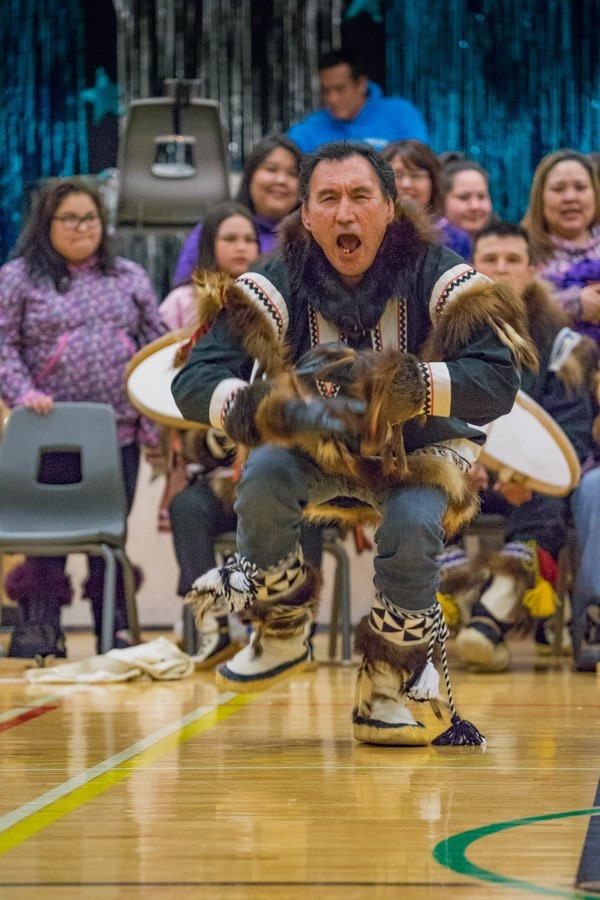
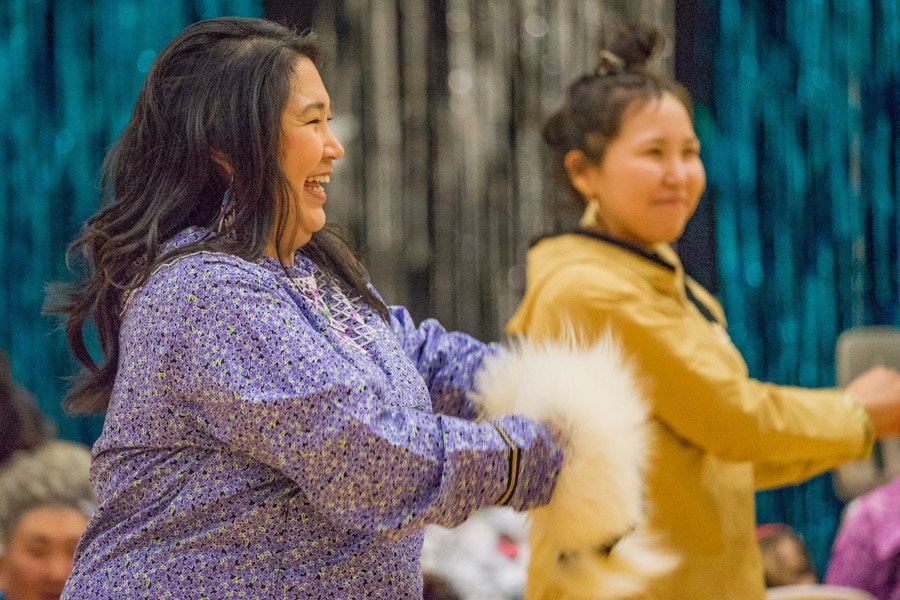
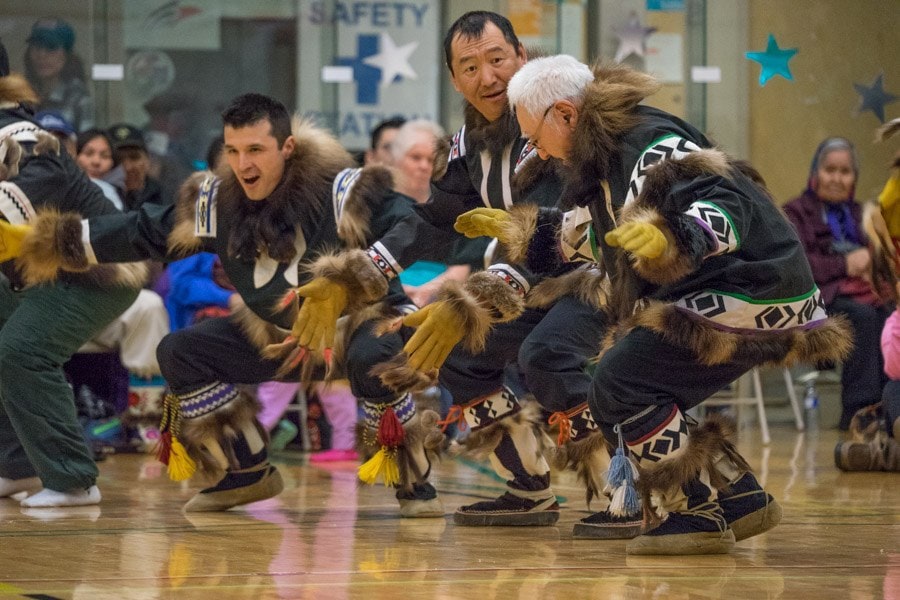
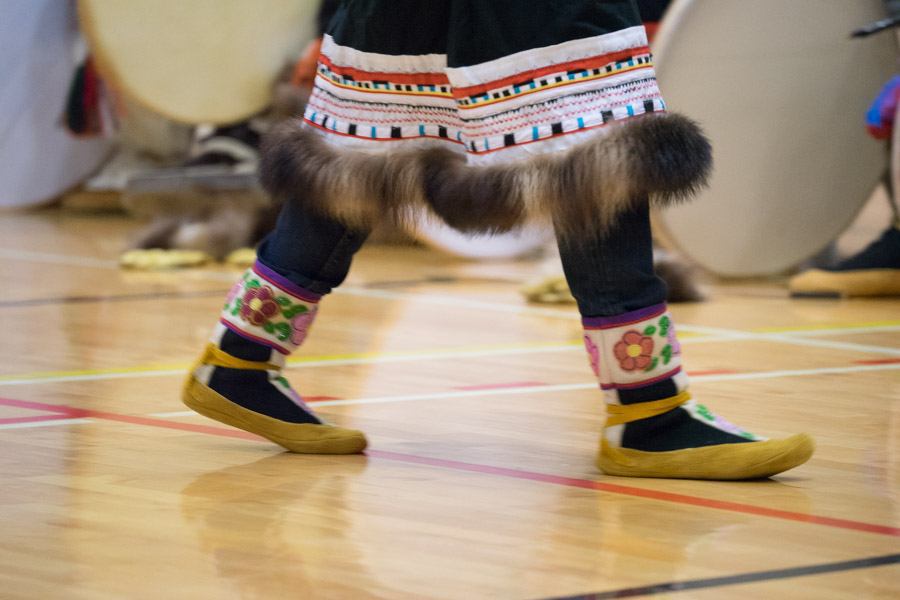
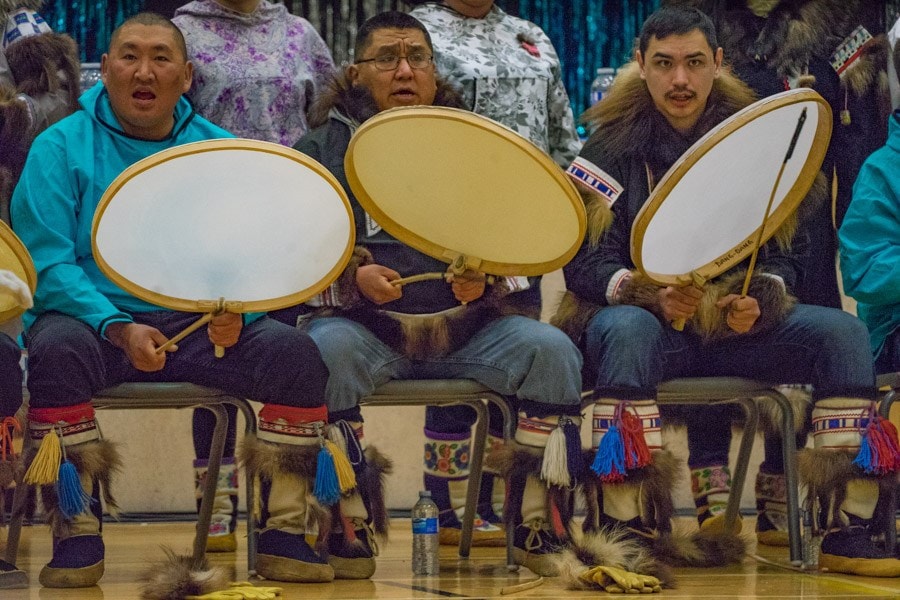
Check out my winter packing list for extreme temperatures
Outdoor Jamboree Events
Dress warm as the Jamboree activities are taken outdoors the next day. You can participate in a number of competitions, such as dog team races, Skidoo races, a harpoon toss, muskrat skinning, tea boiling, and snowshoe Races!
Locals set up traditional tents, and all of the activities and competitions took place on the frozen river. The tents had little chimneys poking out of the top with puffs of smoke coming out. Considering it was below freezing, they looked pretty inviting.
I walked into one and met Irma, a local who does catering. The tent was cozy and warm, with a big stove in the corner and a pile of firewood next to it. As the stove pumped out heat, Irma and her brother got the food ready for the Jamboree. They were selling chili, rabbit stew, Eskimo donuts, and hot tea.
I sat and had some donuts, talked to Irma, and stayed warm. She grew up around Inuvik, NT, and was raised on the land, as most people were around here. She never thought about leaving the area; this was home.
Explore the seven best destinations for extreme travel
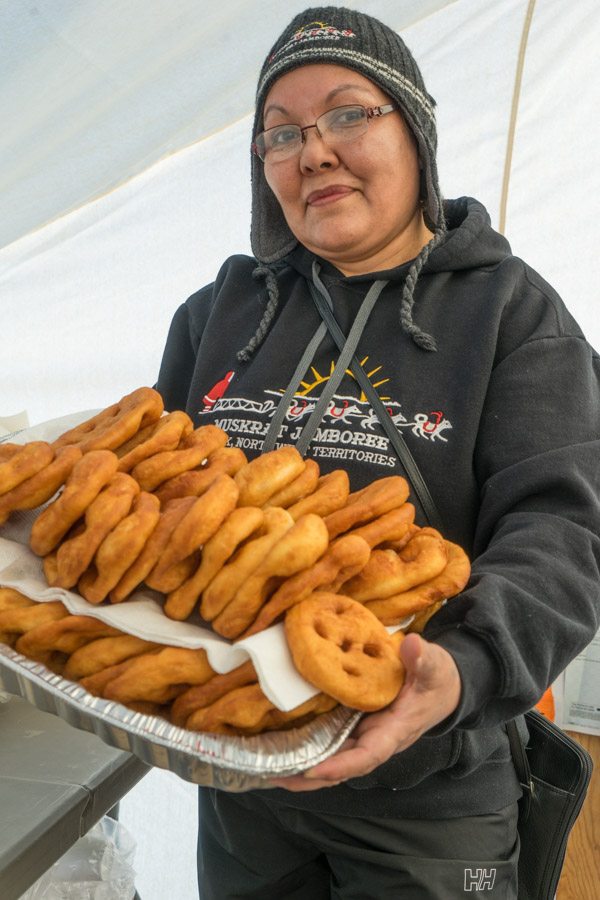
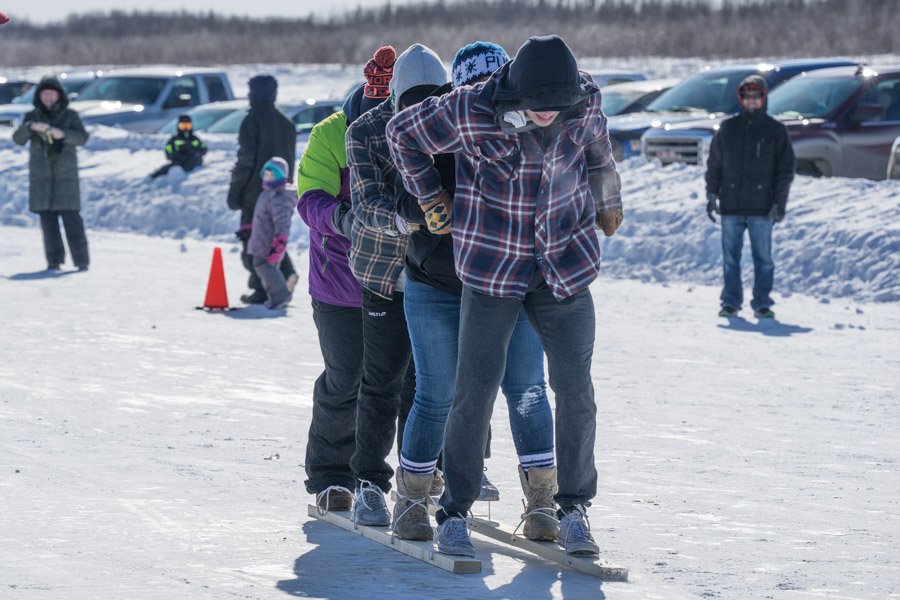
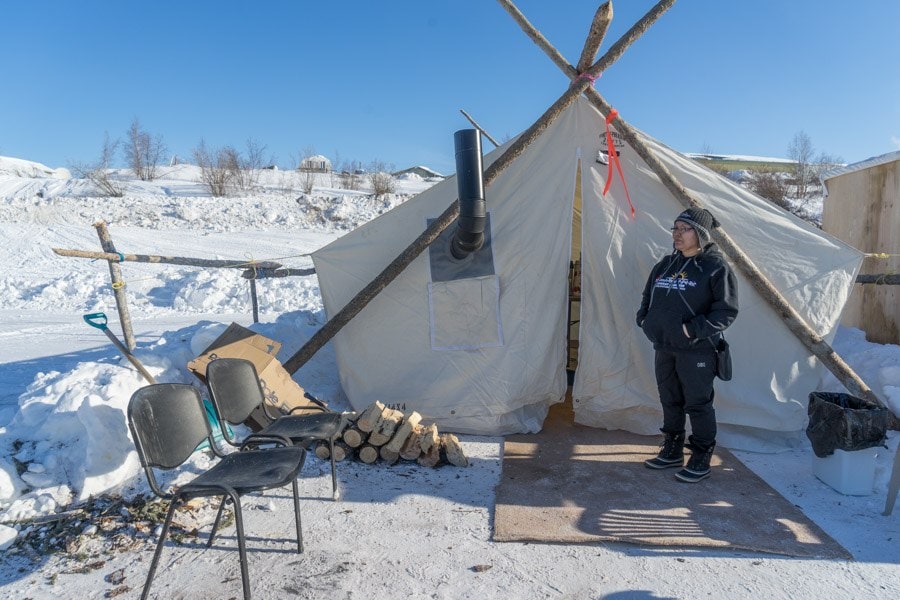
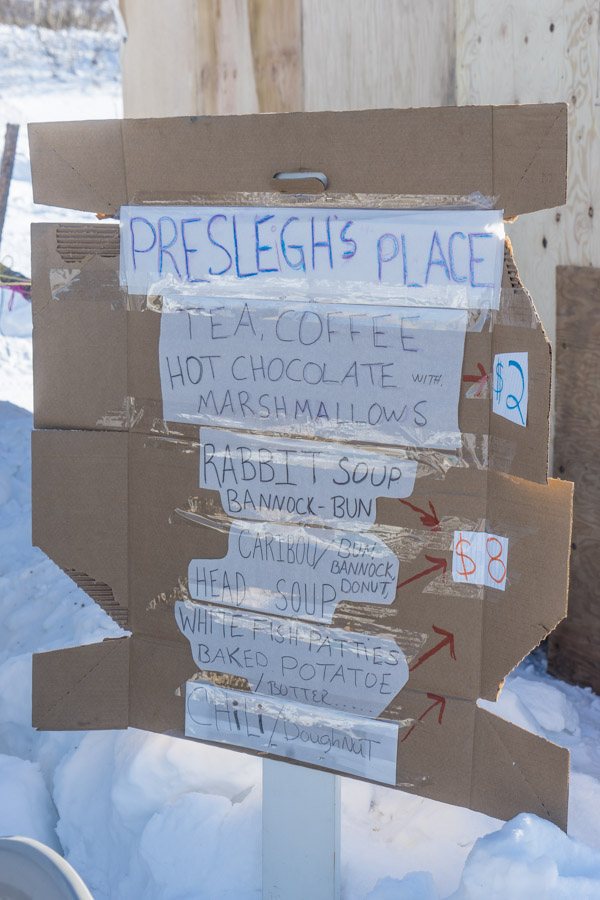
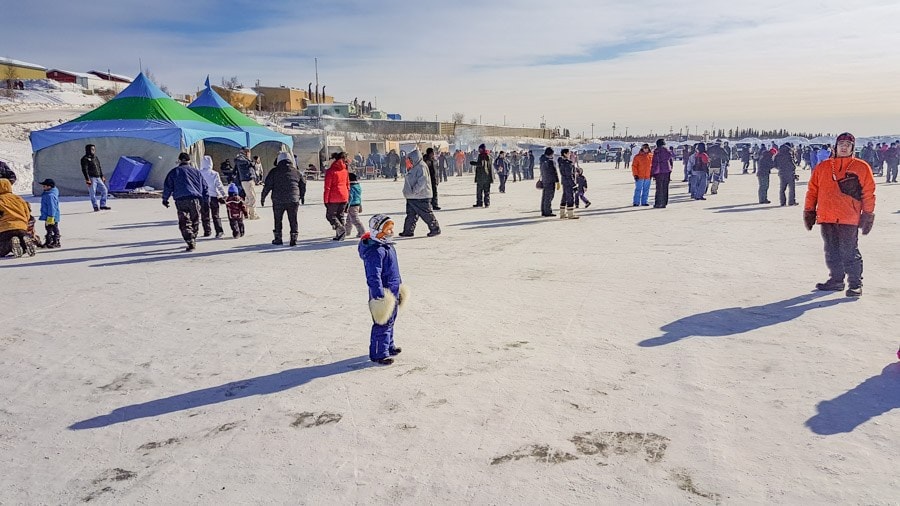
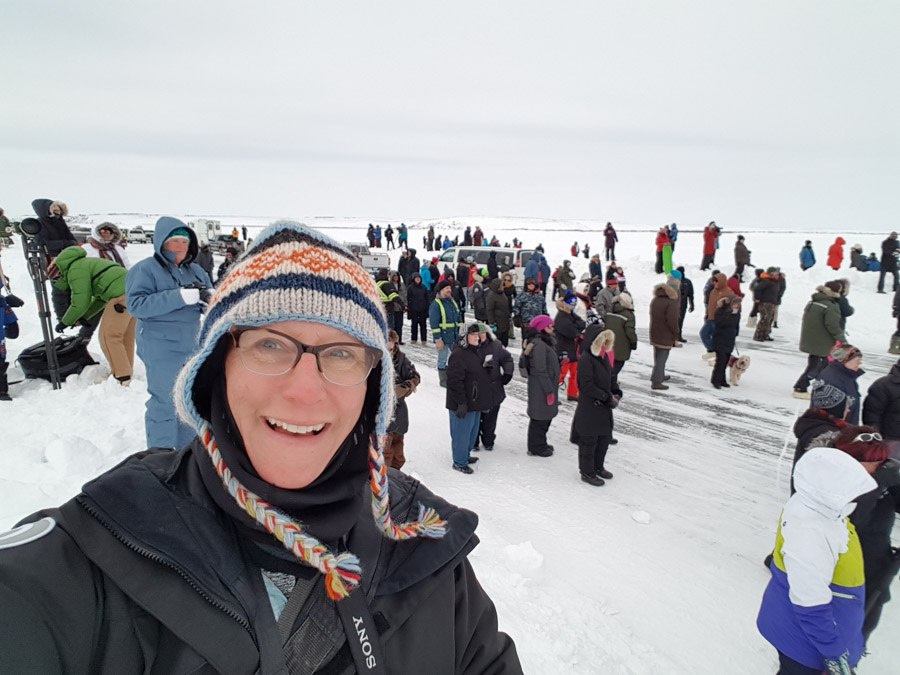
Go Green and Tour the Community Greenhouse
In a region covered with snow most of the year, you would expect very few fresh vegetables. When you are given big obstacles, you come up with big ideas. The Inuvik Greenhouse was a big idea that brought the community together. You can tour the greenhouse and learn all about its inception and how it’s run. It was fascinating to once again see how the community pulls together to support each other.
Check out things to do in Antarctica that don’t involve wildlife
The Community Greenhouse is over 16,000 square feet of space in an old hockey arena. People can grow their own vegetables there from April to October. We were there right before the new soil got shipped in, and the Greenhouse was opening for the growing season. So things weren’t quite green yet!
However, once it’s in full swing, a family with one plot can grow up to $1000 worth of groceries in one summer. For many families, this is a game changer. It helps them save money and provides them with healthy food.
Arctic Farmer’s Market
There’s only one supermarket in the entire town, but once a week in the summer, the Greenhouse holds an Arctic Market where they sell the veggies they are growing. They also have a veggie box program where people can get a veggie box delivered once a week in the summer for $35 each with 6 to 8 items in it. The homeless shelter also has a plot where they can grow vegetables.
The membership fee was $25 for two adults and children +$50 for the plot + 10 hours of volunteer time. I loved the fact that part of the fee was volunteer time, a great way to make sure that everyone is pitching in and making it more of a group effort. That is how you bring communities together.
Diversity is Unity in Remote Communities
Even though the most famous tourist site in Inuvik is the Igloo Church, an architectural wonder, I was more surprised by the other religious building – the mosque. Gerry drove us by the world’s most northern mosque, a site I wasn’t expecting to see.
The Midnight Sun Mosque, also called the Little Mosque on the Tundra, was built in Winnipeg before setting off on its 4000 km journey to Inuvik, NT, in August 2010. In this small community of 3,400 people on top of the world, they could even figure out how to respect the diversity of religions that make up our world.
Fascinated with remote cultures like I am? Read what it’s like to live in the Russian Far East, cut off from the rest of the world.
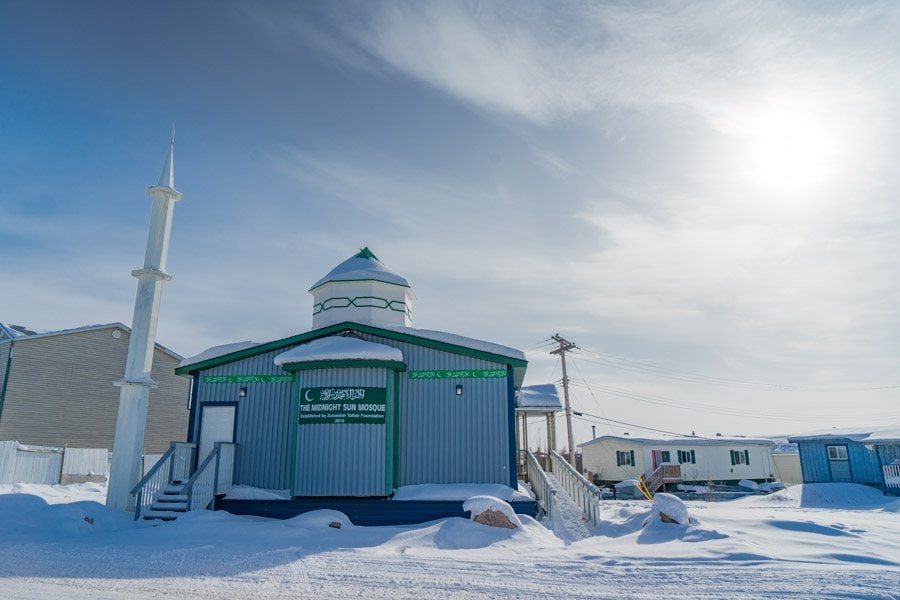
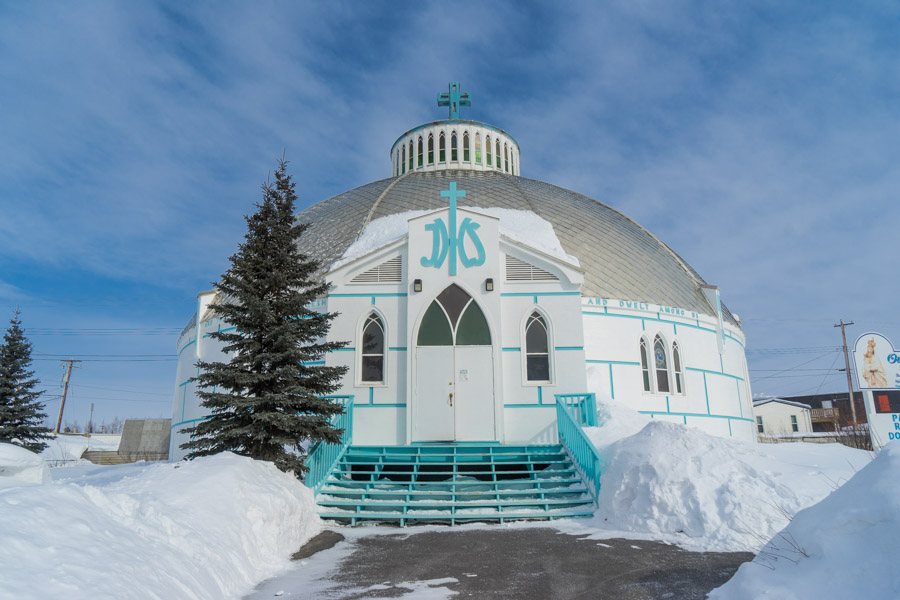
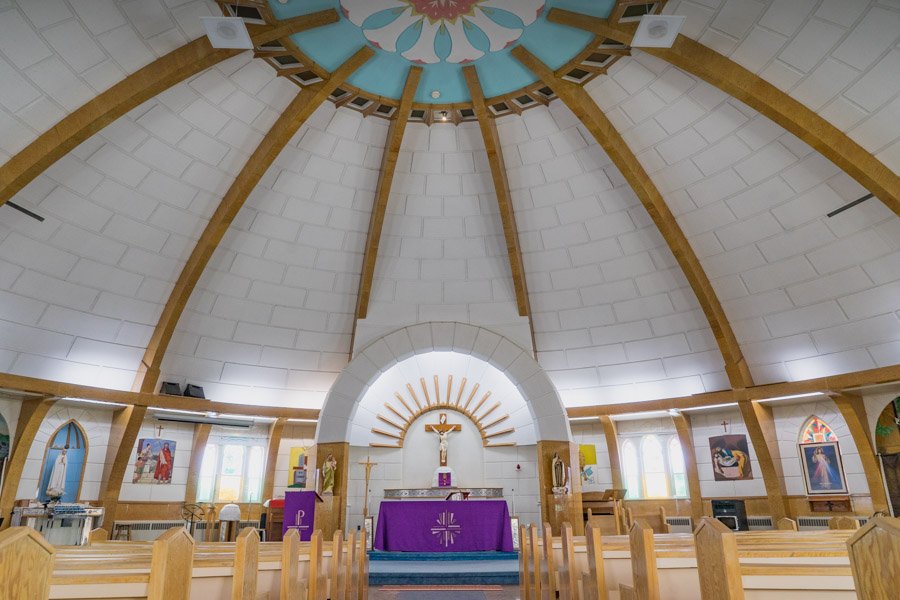
But then again, it shouldn’t have surprised me since the whole weekend, I witnessed the community work together like a well-oiled machine.
I walked away from this experience realizing sometimes it’s the most remote and small communities that are the strongest.
Life in these types of communities is simple and they respect the land for the fruits that it gives them. But they also knew they needed each other to survive, which was why there was such a strong sense of community. Maybe they do know something about the meaning of life that we all don’t.
Discover epic trips to take sooner rather than later!
PIN IT FOR LATER!
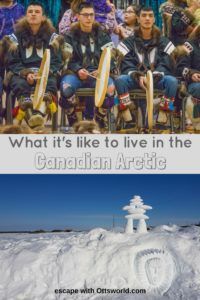
Experience Life Above the Arctic Circle And Visit Inuvik
Tundra North Offers Authentic Cultural tours and experiences in Inuvik and beyond. This is the best way to see and experience the culture. Tundra North Website
Muskrat Jamboree Website
Greenhouse Tours – Scheduled tours are available June-September. Contact the greenhouse for tours
Igloo Church Tours – Tours available during the summer months. See website for schedule and further details.
Where to Stay in Inuvik


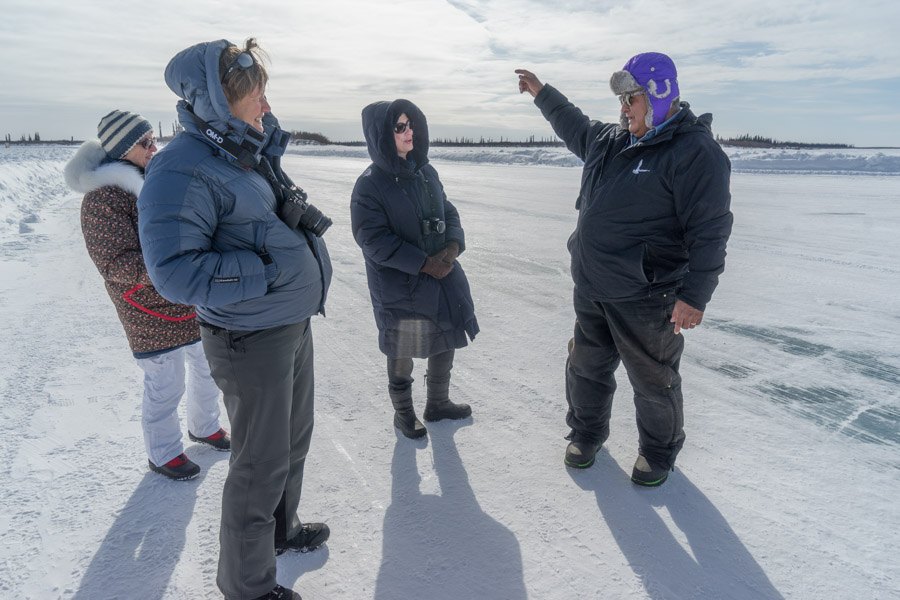
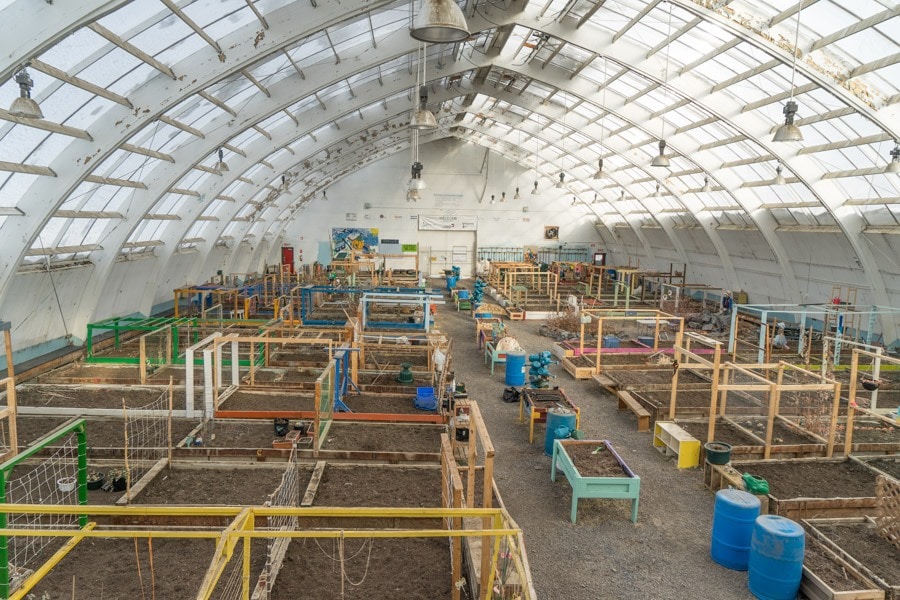
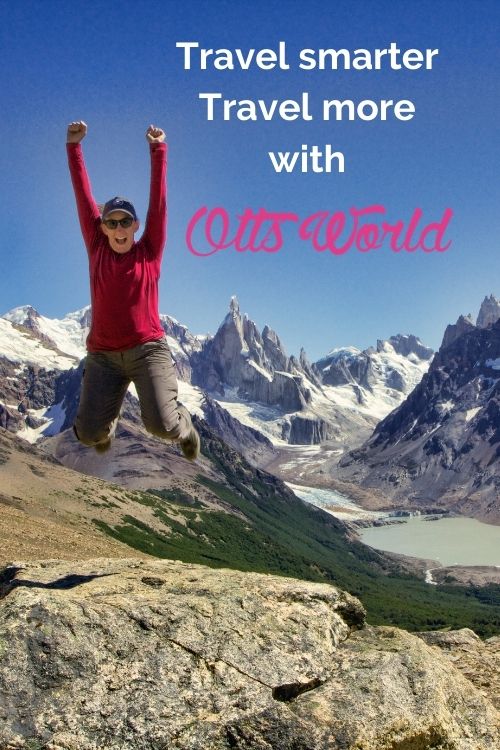
By Barb Cote July 18, 2017 - 11:52 pm
Another great write up Sherry. I really enjoy reading about our life through your eyes. 🙂 Funny about Uncle Gerry starting his stories with “Golly,..” that made me giggle haha
By Sherry July 19, 2017 - 8:22 am
Thanks Barb! I loved the area and people and I am just a curious person I guess when it comes to different cultures and areas in the world. Hope your summer is going great!
By Kathy July 22, 2017 - 8:07 pm
Interesting to read about this trip after so much times has passed since we were there. Expect you have been around the world since then.
I think you said you did an Antarctic trip. Will look for your input and thoughts on that trip because I am booked to go in January
By Sherry July 23, 2017 - 7:00 am
Well, I haven’t quite been around the world since then…but I”m working on it! It’s so great that you are going to Antarctica! Here’s a bunch of info about it on my site https://www.ottsworld.com/destinations/antarctica/
I’ve been twice and went a different way each time. Recently I did a long trip from New Zealand to Eastern Antarctica – but 4 years ago I sent from Ushuia to the Antarctica peninsula which is the most common way. I have info about both of them and what to bring! Let me know if you have any questions Kathy!
By Izy Berry July 23, 2017 - 3:07 am
Wow. They probably do! 🙂 It’s so nice to know that strong happy communities like this exist.
By Sherry July 23, 2017 - 6:56 am
Yes – I think you have to be a strong community in extreme environments!
By Patricia December 25, 2017 - 11:01 pm
We also spent a week experiencing the Arctic Winter in Inuvik – loved every second of it! The people, the traditions, leading our own team of sled Husky dogs – a once-in-a-lifetime adventure trip!
By SOROH PAUL April 16, 2018 - 6:25 am
Please I want to know if, in the Inuvik in the month of jenuary its total darkness?
By Sherry April 17, 2018 - 12:22 am
I believe they get a little sun in January
By Veronica J Latzig September 16, 2018 - 9:45 pm
Thank you for this heart warming article. For a brief moment, I got to imagine what it felt like to be somewhere so different, but have that sense of familiarity as well. ?
By travelzoomeducation January 24, 2019 - 10:56 am
Nice article!!
By K Jackson May 14, 2019 - 10:37 pm
Thankyou so much fo your article l never knew people in lnuvik had so much fun in minus 40 weather.Your article was very interesting.
By Mary E Robb July 29, 2019 - 3:31 pm
Hi to all, especially those of you frim Inuvik!!
My son Michael and my grandson Kaleb are in the area now, or will be there very soon. They are doing their six month adventure trip of a lifetime, with all of us here in New Hampshire hanging on their shirt tails!!
I am so happy for them, and am happier that they are fortunate to meet such wonderful strong cultures!!
Mary
By Derrill Hynick October 12, 2019 - 6:27 am
There are 3500 people that live in Inuvik I did not learn what they do for a living. I came from a small town in Nova Scotia We had a population of 2300 . The people worked in the fishing industry. The sold salt fish and ground fish to other people as a source of income. This gave them the money they needed buy the things they could not produce. How do the people in Inuvik do the same thing? Do the visitors pay all of their bills?
Idle time is a bad situation for young children in this high tech world. Can they live a safe and productive life in Inuvik?
If they have to import most of what they need and have someone else pay for it I think it would be better for them to live closer to the place where they could take part in the main stream economy and be self sufficient. This would make Inuvik a nice place to visit in the warmer weather. In today’s climate changing world we all must keep our carbon foot print to a minimum. This does not seem possible in this remote location.
Look forward to being informed on the facts.
Derrill Hynick
By Albert Bisaillon January 28, 2020 - 7:51 pm
i love reading and learning about the nwt